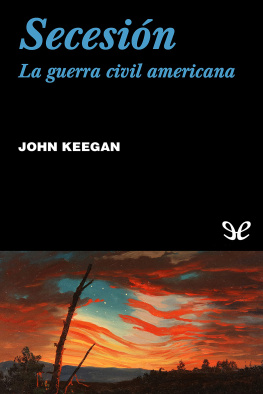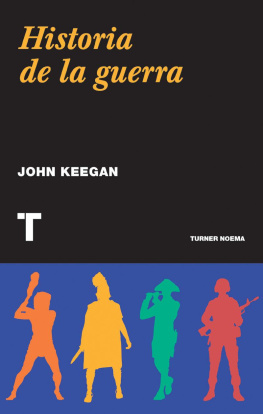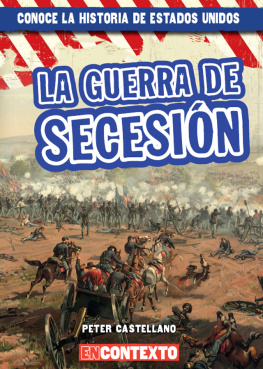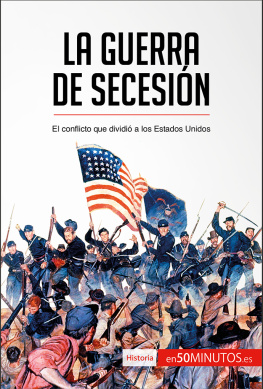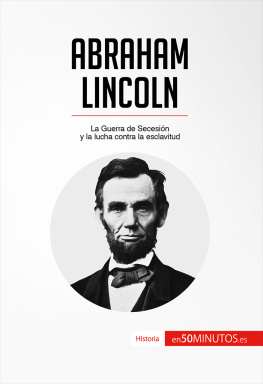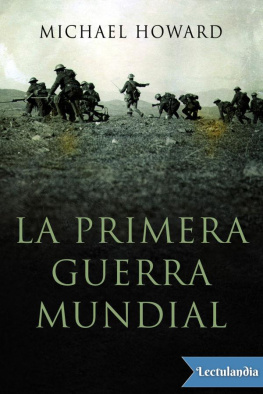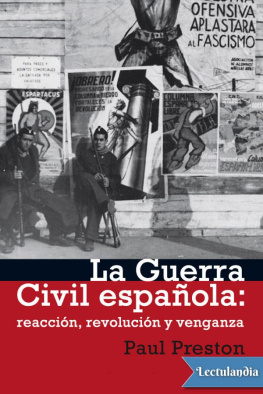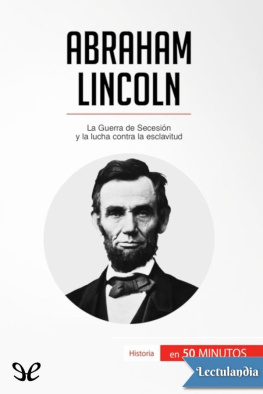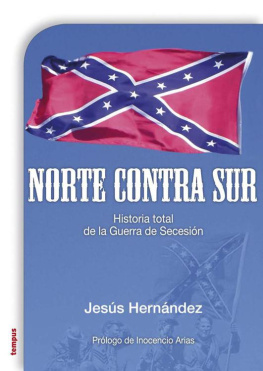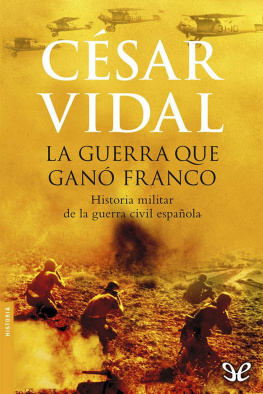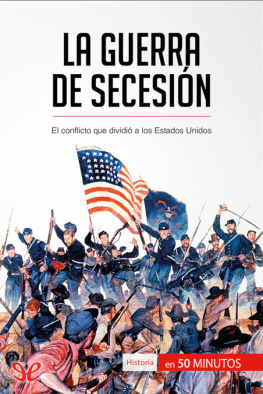AGRADECIMIENTOS
M i primera deuda de gratitud le corresponde a Bill Coolidge. Fue su filantrópica iniciativa lo que nos llevó, a mí y a muchos otros hombres y mujeres de Balliol, a conocer Estados Unidos. En 1957, como becario de Coolidge, hice un recorrido por el país, fundamentalmente para visitar algunos de los más importantes campos de batalla de la Guerra de Secesión.
Doce años antes de emprender aquel viaje, cientos de miles de norteamericanos regresaban del conflicto más terrible del siglo XX. Sus no tan lejanos parientes federales y confederados debieron de experimentar las mismas emociones al reunirse con sus familias, tras sobrevivir a la que sigue siendo hasta hoy la guerra más costosa de Estados Unidos.
Así que es natural que mi segunda deuda de gratitud le corresponda al pueblo de Estados Unidos. Mi llegada a los Estados Unidos de la posguerra como un inglés de veintitrés años, supuso salir de la sombra de la reconstrucción europea hacia la luz de una nación decidida a hacer realidad su propia versión de una sociedad democrática. Desde entonces he tenido la suerte de regresar muchas veces a este país y de ser testigo de esta ambición inquebrantable. Son incontables los individuos e instituciones que han sido mis generosos anfitriones, y la enumeración de todos ellos al cabo de cincuenta años de colaboración constituiría un libro en sí mismo. Pero me gustaría dar las gracias al personal de West Point, Vassar College y la Universidad de Princeton y el US Army Center of Military History, incluyendo al general John Foss, quien fue el primer oficial de enlace del West Point de la posguerra en la Royal Military Academy Sandhurst y finalmente llegó a general de cuatro estrellas, y al profesor James McPherson de Princeton. Estoy especialmente agradecido por las ideas y sugerencias aportadas por mis numerosos amigos y colegas, entre ellos el exsenador Paul Sarbanes, Tom Clancy y George Thompson, quien tan amablemente me asistió durante mi última visita.
Tengo que mencionar a mi editor de Knopf, Ash Green, por su estoica fe en este libro y por el constante apoyo que tan generosamente me ha brindado. George Andreou, quien sucedió a Ash durante la edición final, ha llevado gentilmente la batuta en la tarea de darme ánimos.
En Inglaterra le doy las gracias a mi agente Anthony Sheil, por prestar, como siempre, tan cuidadosa atención a este proyecto. Anthony Whittome, mi editor de Random House, merece especial elogio por su paciencia y por ser fuente de aliento mientras escribía este libro, como también mi editora de imágenes Anne-Marie Ehrlich. Debo una gratitud vitalicia a dos grandes instituciones británicas: el Ejército y la Royal Military Academy Sandhurst, de donde han emergido tantos soldados y académicos talentosos. En particular, debo dar las gracias al mariscal de campo sir John Chapple, al general sir John Wilsey, al mayor general Charles Vyvyan, al coronel Mike Dewar y al teniente coronel Richard Hoare. De Sandhurst he recibido un gran apoyo por parte de mis antiguos colegas Duncan Anderson, Christopher Duffy y Ned Willmott. También deseo reconocer el apoyo de The Daily Telegraph y en especial de Con Coughlin, Simon Heffer, David Twiston-Davies y Pat Venter. Quiero dar las gracias al antiguo profesor de la cátedra Chilele de Historia Militar de la Universidad de Oxford, Robert O’Neill, así como también al profesor actual, Hew Stratchan.
No hubiera podido acometer este libro sin el amor y el respaldo de mi familia. Mi esposa Susanne ha sido, como siempre, un baluarte, como también nuestros hijos, nueras y yernos, Lucy y Brooks Newmark, Tom y Pepy, Matthew y Sharon, y Rose y James McCarthy. Sus maravillosos hijos, Benjamin, Sam, Max, Lily, Zachary, Walter, Martha y Mamie, todos ellos han contribuido a hacer más fácil la travesía de este libro. Asimismo me gustaría dar las gracias a mis amigos de Kilmington Nesta y Michael Gray, Shirley Thomas y Eric Coombs. Y, finalmente, gracias a mi asistente Lindsey Wood, a quien está dedicado este libro. Su tolerancia y laboriosidad en circunstancias difíciles fueron fundamentales para su terminación.
BIBLIOGRAFÍA
ALEXANDER, B., Robert E. Lee’s Civil War, Holbrook (Massachusetts), 1999.
ATKINSON, R., The Long Gray Line, Londres, 1990.
BLACK, R. C., The Railroads of the Confederacy, Chapel Hill (Carolina del Norte), 1952.
BORITT, G. S., editor, Why the Civil War Came, Nueva York, 1996.
CATTON, B., The Centennial History of the Civil War, Nueva York, 1961–1965.
CORNISH, D. T., The Sable Arm: Negro Troops in the Union Army, 1861–1865, Nueva York, 1956.
CRANE, S., The Red Badge of Courage, 1895, Nueva York, 1962 [edición en español: La roja insignia del valor, Juan Aparicio-Belmonte y María Ermitas Barrasa, trs., Rey Lear, Madrid, 2007].
CUNLIFFE, M., Soldiers and Civilians: The Martial Spirit in America, 1775–1865, Boston, 1973.
DAVIS, G. B., L. J. Perry, J. W. Kirkley y C. D. Cowles, The Official Military Atlas of the Civil War, Nueva York, 1983.
DONALD, D. H., Lincoln, Nueva York, 1995.
—, Why the North Won the Civil War, Baton Rouge (Louisiana), 1960.
DYER, F. H., A Compendium of the War of the Rebellion, Nueva York, 1953.
ESPOSITO, V. J., The West Point Atlas of American Wars, vol. 1, Nueva York, 1959.
EyeWitness to History, «Surrender at Appomattox, 1865», www.eyewitnesstohistory.com, 1997.
FAUST, D. G., The Creation of Confederate Nationalism, Baton Rouge (Louisiana), 1998.
FOX, S., Wolf of the Deep: Raphael Semmes and the Notorious Confederate Raider CSS Alabama, Nueva York, 2007.
Freeman, D. S., Lee’s Lieutenants, Nueva York, 1942–1944.
—, R. E. Lee: A Biography, Nueva York, 1934–1935.
FURGURSON, E. B., Not War but Murder: Cold Harbor, 1864, Nueva York, 2000.
GARRISON, W. B., Atlanta and the War, Nashville (Tennessee), 1995.
GENOVESE, E. D., Roll, Jordan, Roll: The World the Slaves Made, Londres, 1975.
GOULD, J. M., The History of the First—Tenth—Twenty-ninth Maine Regiment: In Service of the United States from May 3, 1861, to June 21, 1866, Portland (Maine), 1871.
GRANT, U. S., Personal Memoirs of U. S. Grant, Nueva York, 1885–1886.
GRIESS, T. E., editor, The American Civil War, Wayne (Nueva Jersey), 1987.
GRIFFITH, P., Battle Tactics of the Civil War, New Haven (Connecticut), 1989.
HATTAWAY, H., y A. Jones, How the North Won: A Military History of the Civil War, Urbana (Illinois), 1983.
HENDERSON, G. F. R., Stonewall Jackson and the American Civil War, Nueva York, 1900.
HERMAN, M. Z., Ramparts: Fortification from the Renaissance to West Point, Nueva York, 1992.
HESS, E. J., The Union Soldier in Battle, Lawrence (Kansas), 1997.
HICKS, R. W., y Frances E. Schultz, Battlefields of the Civil War, Topsfield (Massachusetts), 1989.
JOHNSON, R. U., y C. C. Buel, Battles and Leaders of the Civil War: The Century Magazine, 4 vols., Nueva York, 1884–1888.
JONES, A., Civil War Command and Strategy: The Process of Victory and Defeat, Nueva York, 1992.
JONES, J. B., A Rebel War Clerk’s Diary, Nueva York, 1958.
KATCHER, P., The American Civil War Source Book, Londres, 1992.
KENNEDY, F. H., editor, The Civil War Battlefield Guide, Boston, 1990.
KERBY, R. L., Kirby Smith’s Confederacy: The Trans-Mississippi South, Nueva York, 1972.
LIDDELL, H., B. H., Sherman: Soldier, Realist, American, Nueva York, 1958.
LINCOLN, A., Speeches and Writings, 1859–1865, Nueva York, 1989 [edición en español de la antología El discurso de Gettysburg y otros escritos sobre la Unión

